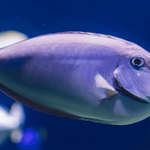Exploring animals that start with the letter ‘X’ can be quite a challenge! Unlike more common letters, X introduces us to a unique and often overlooked group of creatures.
Many people struggle to name even one animal that begins with this uncommon letter, which can be frustrating for curious minds and animal enthusiasts alike.
In this guide, we will dive into the fascinating world of animals that start with X. From the Xoloitzcuintli, a breed of hairless dog, to the mysterious Xenops bird, we promise to uncover and showcase a variety of creatures that you might have never heard of.
Learn more about animals in a fun and engaging way!
Mammals Starting with Letter X
Xanthippe’s Shrew
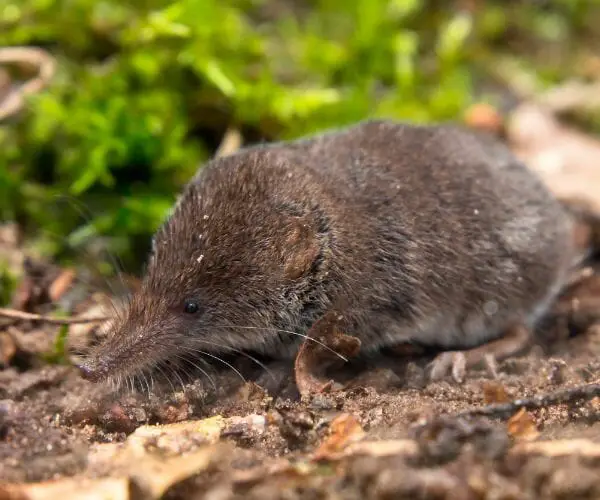
Xanthippe’s Shrew is one of the animals that start with x. These mammals that belong to one out of 385 shrew species. They are found in the natural habitat of dry savanna or tropical shrublands of Kenya & Tanzania.
Xoloitzcuintli or Xolo
The Xoloitzcuintle is a hairless dog breed native to Mexico and available in 3 sizes (toy, miniature, and standard) and 2 varieties (hairless and coated).

Both varieties come in black and dark grey, have a lifespan of 13-18 years and are known for their loyalty and strong bonds with their families.
Back 3500 years ago, Xolos played a vital role in the Pre-Columbian era. They were considered man’s best friend by the Aztecs and Mayans.
Xenarthra
Xenarthra is a superorder of mammals that includes anteaters, sloths, and armadillos. They are found in North and South America.
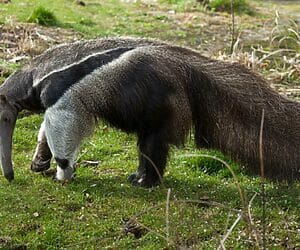
They are known for their “Unusual Bone Joints” and low metabolism, which makes them slow-moving and submissive animals. The giant anteater, nine-banded armadillo, and brown-throated sloth are all xenarthrans.
Xenomys Nelsoni
Xenomys Nelsoni, also known as The Magdalena rat. It is the smallest mammal from one of the rodent species in the world.
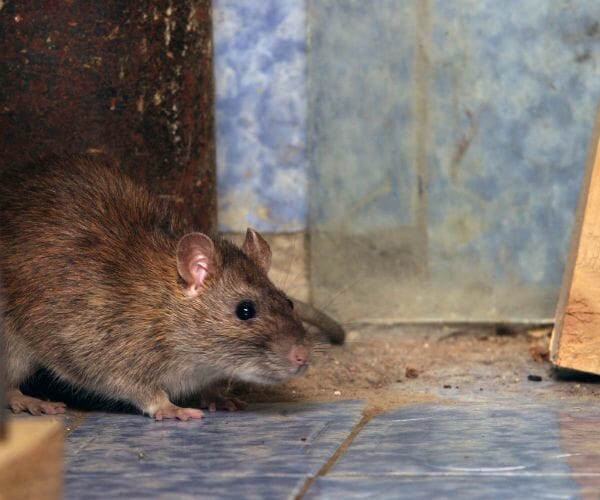
This tiny creature, native to northwest Mexico, weighs only about half an ounce and measures two inches in length.
Xenurus Unicinctus
The cabassou, commonly named as the Southern Naked Tailed Armadillo, is native to South America. It has a smooth, hairless body and a small, pointed tail that is not covered in protective armor like most armadillos.

The cabassou is also a skilled digger and can burrow underground to escape predators.
Xerus

Xerus, also known as the African ground squirrel. They belong to one of the species of African ground squirrels. They can survive for extended periods without water due to their ability to extract moisture from the seeds.
The African Ground Squirrel fluffs a layer of fur to keep warm in winter. These African ground squirrels stamp their hind legs to warn predators and make themselves look large.
Birds Starting with X
Xantus Becard

Xantus Becard is a rare and colorful bird species native to Central and South America. Also known as Rose-throated Becard, it has a striking appearance with a black and white striped head, green back, and red breast.
The male puffing out their feathers and performing aerial acrobatics is an elaborate display of courtship to impress potential mates.
Xantus’s Hummingbird
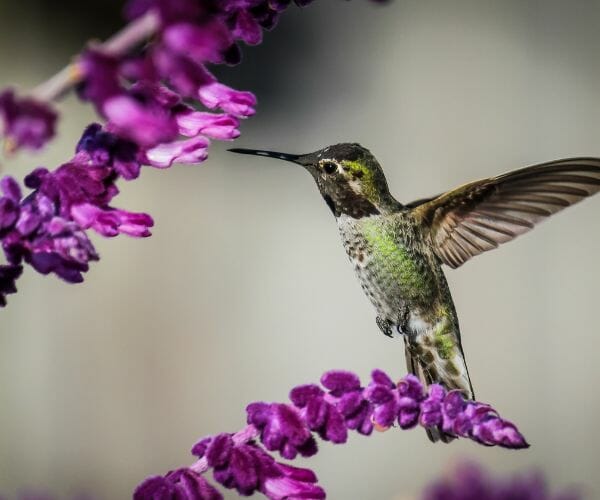
Xantus’s Hummingbird is the only bird species found in Mexico. This bird species is known for its bright green head, chestnut brown underparts, and white stripe above its eye.
The male Xantus Hummingbird also has a distinctive purple throat patch, which it uses to attract a mate. Despite its small size of 3 inches, the young birds are known for their fierce defense ability in their territory, as they will aggressively chase away any intruders.
Xantus’s Murrelet
Xantus’s Murrelet is a tiny endangered sea bird species found along the Pacific Ocean coast.

Guadalupe Murrelet is one of the most endangered species in the world. Instead of building nests, these birds have developed a habit of laying eggs on bare rocky ledges and cliffs to protect themselves from predators. As a result, the Xantus’s Murrelet species was split into Scripps’s Murrelet and Guadalupe Murrelet.
Xavier’s Greenbul

Xavier’s Greenbul is a brightly colored songbird from the Bulbul family, found in the forests of Central and West Africa.
They are classified as endangered species. Xavier’s Greenbul helps in controlling insect populations and dispersing seeds through their diet of insects and fruit.
Xeme
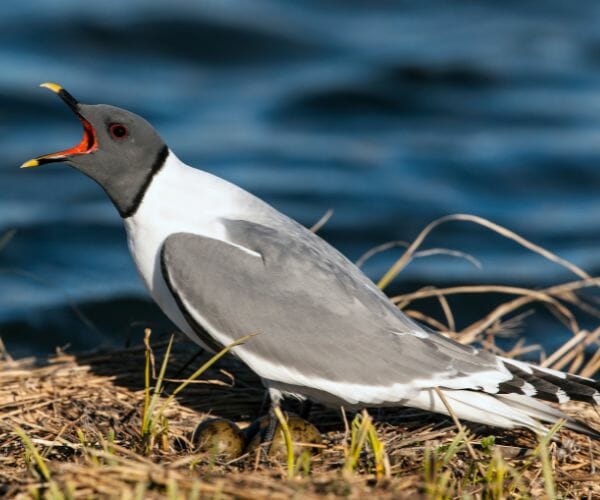
Xeme, also known as Sabine’s Gull, is a small migratory seabird found in the Arctic regions of North America and Asia.
Xeme feeds on small fish, insects, and invertebrates. It breeds in colonies on islands in the Arctic, building nests out of grass and moss.
Xinjiang Ground Jay (Biddulph’s Ground Jay)
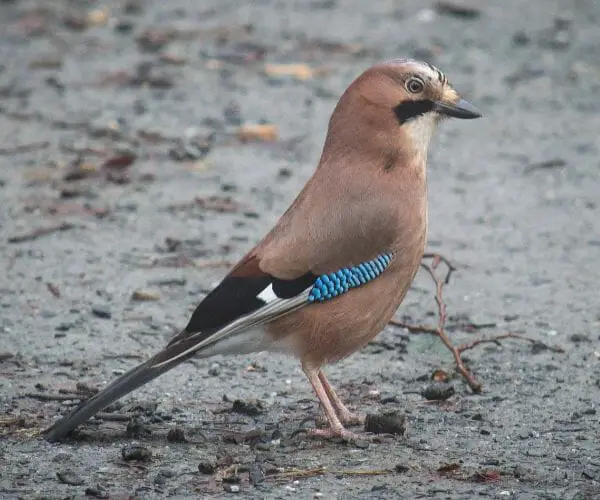
The Xinjiang Ground-Jay (Biddulph’s Ground Jay) is a small native bird from the Xinjiang region of north west China. It is a corvid family member, including crows and jays.
It has a distinctive blue-gray head and neck, reddish-brown back, and wings. It feeds on seeds, insects, and small vertebrates.
Xenicidae

Xenicidae, commonly known as New Zealand wrens, is a small species of the bird family. The family consists of six species. However, the only two existing species are the rifleman and the rock wren.
These birds live in the forested areas of New Zealand, where they feed on insects and other small prey. These small-sized, eco-friendly birds are known for their high-pitched calls and energetic behavior.
Xenicus Gilviventris

The Xenicus Gilviventris, more commonly known as the New Zealand Rock Wren, is a small, sparrow-sized bird native to New Zealand. It is the only surviving member of the Xenicus genus.
Rock wrens are found in rocky areas, and have adapted to climbing and hopping on rocky terrain. They are brown with a pale belly and have a short, curved beak. Rock wrens are endangered due to habitat loss.
Xenipirostris
Xenipirostris is a genus of small, insect-eating birds found in New Guinea. They are part of the family Meliphagidae, which includes honeyeaters. Xenipirostris species are typically brightly colored in red, yellow, and black.
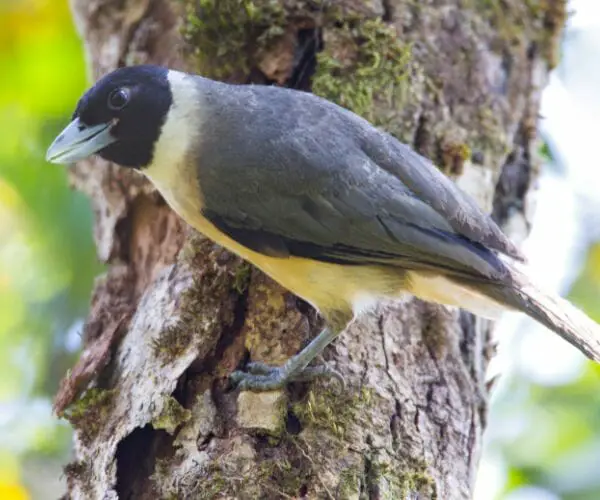
They are known to feed on insects, nectar, and fruit. Xenipirostris, a genus of 3 species within the same family, Vangidae, are all endemic to Madagascar.
Xenops

Xenops, also known as oven birds, are small insect-eating passerine birds native to Central America and South America. They live in the coastal regions of Florida and the savanna of Mexico.
Xenops have three species, slender-billed, plain, and streaked. With over 5 million population, the birds are typically brown or grey. They have long, thin beaks and bodies. These energetic, acrobatic birds are known for their ability to cling to trees and feed on insects.
Xenorhyncus Asiaticus

Commonly known as “Black Necked Storks,” they are large wading sea birds found in South and Southeast Asia wetlands.
Xenorhyncus Asiaticus has distinctive black and white feathers with a long, thin beak. It feeds on fish, frogs, and small mammals. Unfortunately, the black-necked stork population is declining due to habitat loss and hunting.
Xolmis
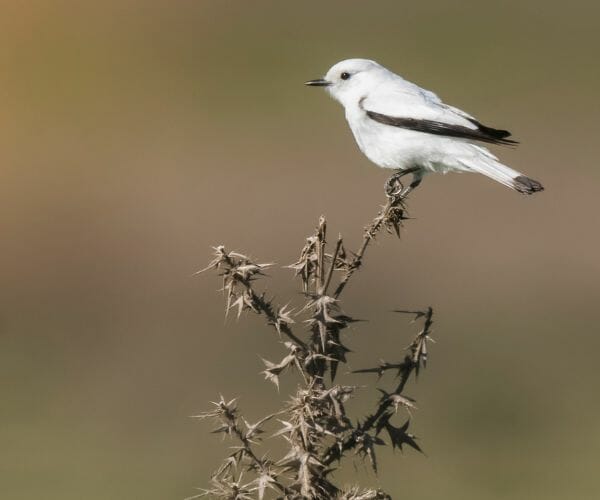
Xolmis, also known as White-Rumped Monjita, is a small, insect-eating bird in South America. The bird has a distinctive white patch on its rump and a thin, curved bill. It belongs to the largest family Tyrannidae of birds with over 400 species.
The Xolimis come from a group of birds known as “tyrant flycatchers” Xolmis perch on wires or fly low over fields and grasslands. It feeds on insects, including grasshoppers and flies, and is known for its distinctive call, a series of sharp, high-pitched chirps.
Reptiles Starting With X
Xantus’ Leaf-Toed Gecko
Xantus’ leaf-toed gecko is a species native to Baja, California, and north west Mexico. This gecko is tiny in size, about 2.5 cm in length. It lives in arid or semi-arid habitats, such as rocky outcrops and canyon walls. The Xantus leaf toed gecko is a nocturnal species and feeds on insects.
The female Xantus leaf-toed gecko lays 20 eggs in one reproduction cycle, which takes about 89 days to hatch.
Xenopeltis
Xenopeltis is a species of snake found in Southeast Asia. It is known for its unique, shiny scales and long, slender body. It is a non-venomous snake and typically feeds on small rodents and birds. Xenopeltis is also known for its agile motion.
Xenosaurus
Xenosaurus is a genus of 10 tropical, terrestrial lizard species found in Central and South America. They are also called “rainbow lizards” due to their brightly colored scales.
Xenosaurus are small-sized lizards, about 10 cm long. They are primarily insectivorous, egg-laying lizards who are endemic to Mexico and Guatemala.
Xantusia
Xantusia is a genus of lizards that is native to the southwest United States and north west Mexico.
There are six known species in this genus, including The desert night lizard family, the island night lizard, and the striped plateau lizard.
Xantusia is a small, nocturnal lizard with smooth scales and a flattened body. Commonly found living in rocky or sandy habitats.These endangered species give birth to young offspring instead of laying eggs.
Amphibians Starting With X
Xolocalca Bromeliad Salamander
The Xolocalca Bromeliad Salamander is a salamander species that lives in Mexico’s forests. It is a small, brightly colored lizard species with red, orange, and yellow markings on its body.
They have adapted to live inside the bromeliad plants, using the water-filled cups as a habitat. This endangered species is endangered in Chiapas and Mexico.
Xucaneb Robber Frog
The Xucaneb Robber Frog is a species of frog found in the tropical rainforests of Guatemala in Central America. It is a small, brightly colored frog known for its bold behavior and tendency to steal insects from other animals.
The Xucaneb Robber Frog is an excellent climber, using its long toes and sticky pads to easily navigate the rainforest canopy. It is also an agile jumper, using its powerful legs to escape predators and capture prey.
Xenopus
Xenopus is a genus of African clawed frogs native to sub-Saharan Africa. They are a popular species in scientific research due to their ability to easily reproduce and develop.
The African clawed frog is known for its use in pregnancy testing and the discovery of the structure of DNA. The genus, African clawed frog, is divided into 29 species and is known to live up to 15 years.
Fishes Starting With X
Xantic Sargo
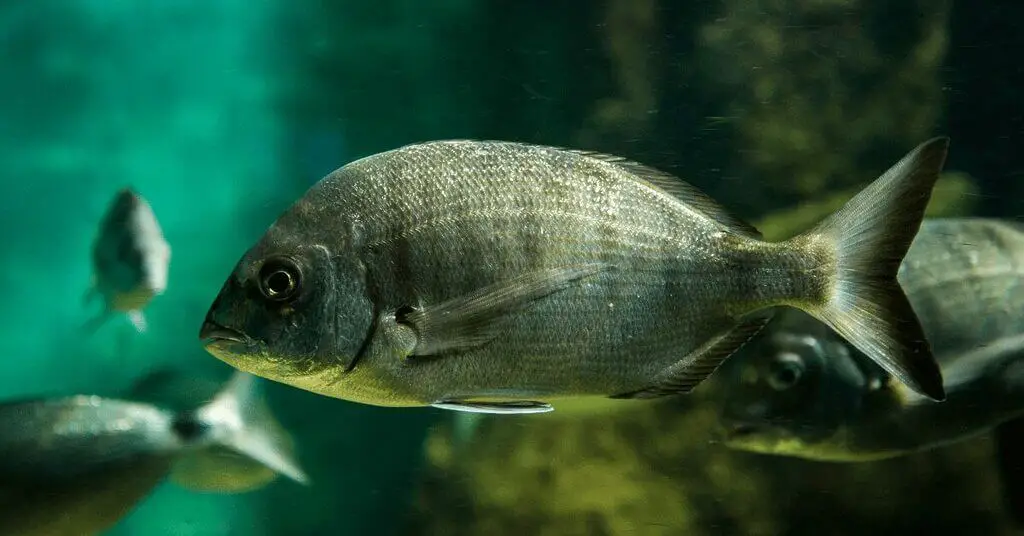
Xantic Sargo is a member of the grunt fish family due to the grinding sound it makes while eating with pharyngeal teeth. Xantic Sargo is native to the eastern coasts of the Pacific Ocean. It is also known as California Sargo for its pouty lips, silver-colored scales, and elongated body shape.
This fish can grow up to 22 inches and is commonly found in shallow waters near the coast. Xantic Sargo feeds on catching smaller animals such as small crustaceans, small fishes, seagrass, and seaweed.
Xingu Corydoras
The Xingu Corydoras, also known as the Xingu Catfish. They are tropical freshwater fish native to the Xingu River in Brazil.
It belongs to the family Callichthyidae and is known for its distinctive black and white stripes. In the breeding season, these fishes lay eggs in dense sea plants
Xestus Sabretooth Blenny
The Xestus Sabretooth Blenny is a small, saltwater fish that lives in the Pacific ocean. It belongs to one out of 400 species of the family Blenniidae. The members of this species are called “combtooth blennies” for their distinctive, saber-like teeth and elongated bodies.
They usually grow up to 7 centimeters in length. Xestus Sabretooth is an omnivorous animal.
Xingu River Ray
The Xingu River Ray, also known as the White-Blotched River Stingray. This species of fish belongs to the family Potamotrygon Leopoldi. These are freshwater fishes found in the upper Xingu River Basin in Brazil.
These river ray fishes have blackish bodies with white dots. It can grow to a size of up to 2 feet in length. Unfortunately, the Xingu River Ray is endangered due to habitat loss and overfishing.
XL Spring Tui Chub
The XL Spring Tui Chub is a freshwater fish belonging to the Cyprinidae family. These fish are commonly found in North America’s lakes, ponds, and streams. Tui chub can adjust to new environments. River Chubs have fins that are brightly colored, ranging from yellow-orange to red.
Xanthichthys

Xanthichthys belongs to the species of triggerfish that live in the tropical waters of the Pacific and Indian Oceans.
They are known for their bright colors and the ability to lock their pectoral fins in place to secure themselves in coral crevices. Also, Xanthichthys triggerfish make clicking noises when threatened or annoyed, likely to deter predators or intruders.
X-ray Tetra
X-ray Tetra Fish is a small, colorful x-ray fish found in the Amazon Basin of South America.
X-ray Tetra fishes get their name from the distinctive black stripes on their transparent skin. The transparent skin makes the bones and internal organs of X-ray Tetra visible.
X-ray tetra fish swim together in large groups to protect themselves from predators.
Xenaploactis
Xenaploactis, also called velvet fishes, are a group of small, brightly colored fish native to the freshwater streams and rivers of Southeast Asia.
They are known for their iridescent velvet-like appearance, resulting from tiny scales covering their body.
Xenentodon
Xenentodon belongs to the species of needlefish native to Southeast Asia. It belongs to the family Belonidae and is known for its distinctive long and slender beak-like snout. It feeds on small insects, crustaceans, and small fish and is often found in swamps.
Xenichthys
Xenichthys is a genus of ray-finned fishes that start with x in the family of grunts. These flathead fish are native to the western Pacific Ocean.
It is found in the coastal waters of Japan, China, and Korea and can grow up to 40 cm in length. It is known for its distinctive, flattened head and prominent eyes.
Xenisthmus
Xenisthmus is a genus of wrigglers, a small fish commonly found in the tropical waters of the Western Atlantic. There are nine known species within the genus, all of which are characterized by their elongated bodies and small fins.
These fish are typically found in shallow, rocky environments and are known to be good swimmers, using their elongated bodies to navigate through the water
Xenistius
Xenistius is a genus of grunts, a type of fish known for the grunting noise they make when caught. There are two species within this genus.
Xenobalistes
Xenobalistes is a genus of triggerfish, a group of brightly colored, tropical marine fish. They are known for their strong, triangular teeth and the ability to lock their pectoral fins. There are two species within this genus.
Xenobarbus loveridgei
Xenobarbus loveridgei is a species of cyprinid fish found in Lake Victoria, the largest lake in Africa.
Xenocephalus
Xenocephalus is a genus of stargazers, a type of fish that gets its name from its unique eye positioning, which allows it to bury itself in the sand and watch for prey above. There are six known species of Xenocephalus.
Xenocharax
Xenocharax is a genus of characins, a group of freshwater fish found throughout South America. There are two known species of Xenocharax.
Xenochromis Hecqui
Xenochromis Hecqui is a cichlid fish only found in Lake Tanganyika, a large, deep lake in Africa.
Xenocyprioides is a genus of cyprinds, a family of fish that includes carps and minnows. There are two known species of Xenocyprioides, native to China.
Xenocypris
Xenocypris is a genus with seven fish species native to Asia. Xenocypris species are small, averaging about 2-4 inches in length. They live in aquatic habitats, including rivers, streams, and lakes.
Xenodermichthys
Xenodermichthys is a species of fish that contains only two species, both known as slickheads. These fish are found in deep-water environments characterized by their smooth, scale-less skin. As a result, they can adapt to the extreme pressure and low light conditions found in the ocean’s depths.
Xenomystax
The Xenomystax genus comprises five species of eels found only in specific areas. They can also regenerate lost body parts, a rare trait among fish.
Xenopterus Naritus
Xenopterus Naritus is also known as the Bronze Puffer, is a type of fish found in tropical waters.
Xenotilapia
Xenotilapia is a genus of cichlids native to Lake Tanganyika, containing 16 species.
Xenurobrycon
Xenurobrycon is a genus of characins found in South America, with six known species.
Xestochilus Nebulosus
Xestochilus Nebulosus is also known as the Nebulous Snake Eel, is a type of fish found in tropical waters.
Xiphias gladius
Xiphias gladius, more commonly known as the Swordfish, is a predatory fish known for its sharp, pointed bill.
Xiphophorus
Xiphophorus is a genus of tooth-carps containing 28 different species found in Central and South America.
Xiurenbagrus
Xiurenbagrus is a genus of torrent catfishes found in Asia, with three known species.
Xyelacyba Myersi
Xyelacyba Myersi, also known as the Gargoyle Cusk, is a type of fish found in the Western Atlantic Ocean.
Xyliphius
Xyliphius is a genus of catfishes found in South America, with seven known species.
Xyrias
Xyrias is a genus of snake eels containing four species in tropical waters.
Xyrichtys
Xyrichtys is a genus of wrasses found in the Indo-Pacific region, with 12 known species.
Xystreurys
Xystreurys is a genus of large-tooth flounders found in the Western Atlantic Ocean, with two known species.
Xystichromis
Xystichromis is a genus of cichlids found in Lake Tanganyika, Africa.
Summary of the Animals that Start with X
And that’s a wrap with Animals that Start with X
There we have it! List all 64 names of animals that start with the X. If you want to learn more further, you can go to the animal with the letter Y page. Which animal was your favorite one?
Checkout the entire series of animals that begin with x or start with the letter: A, B, C, D, E, F, G, H, I, J, K, L, M, N, O, P, Q, R, S, T, U, V, W, X, Y, Z.
FAQS about Animals that Start with X
What animals that start with X?
Interesting animals that start with X.
Xantus’s Hummingbird is the only hummingbird species found in Baja California.
Xanthippe’s Shrew is named after the wife of ancient Greek philosopher Socrates.
Xantic Sargo is a type of fish found only in the Gulf of California.
Xantus Leaf-toed Gecko is found in rocky areas of Baja California and has toes adapted for climbing.
Xantus Murrelet is a small seabird that breeds on offshore islands in the Pacific Ocean.
How do x-ray tetras get their name?
X-ray tetras get their name from the transparent appearance of their bodies, which allows the bones and internal organs to be seen as if through an x-ray. They are native to South America and are popular in the aquarium trade.
What is the Xerus squirrels known for?
Also known as the cape ground squirrel, the Xerus is known for its distinctive black and white striped tail. It is a burrowing animal that can often be found in grassland and savanna habitats in Africa. The Xerus is known for its territorial behavior and is known to fiercely defend its burrow against intruders.
- What Should I Do If A Koala Bites Me? Safety Guide - 2024-05-30
- Are Kangaroos Born Without Hind Legs? A Fascinating Journey - 2024-05-30
- Animals That Look Like Squirrels - 2024-05-30








